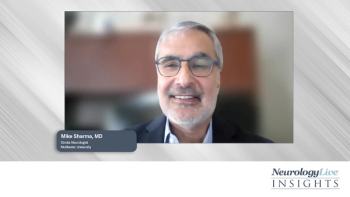
Decoding the Circuitry That Stabilizes Memory Maps in the Hippocampus

Jayeeta Basu, PhD, an assistant professor in the departments of Psychiatry and Neuroscience at NYU Langone, commented on how newly decoded entorhinal–hippocampal circuits stabilize memory maps during learning.
The entorhinal–hippocampal circuit has long been central to how the brain forms and recalls memories, yet key questions remain about how these networks maintain stable representations while learning new information. A recent Science study led by Jayeeta Basu, PhD, from
Basu, an assistant professor of Psychiatry and Neuroscience and a faculty member at the Institute for Translational Neuroscience, has long focused on the circuit dynamics that shape memory precision. Her team’s findings outline a disinhibitory mechanism through which LEC inputs fine-tune CA3 recurrent networks, promoting stable context-dependent place representations. This foundational work not only deepens the understanding of memory circuitry but also points toward future opportunities for targeted neuromodulation and brain–computer interface approaches aimed at restoring memory stability in neurologic and neuropsychiatric disease.
NeurologyLive: What was the motivation and background behind this study?
Jayeeta Basu, PhD: Place cells are considered the underpinning of long-term spatial memory in all mammals from mice to humans to whales, and the cognitive map of space needs to remain stable for reliable navigation and yet flexible for adaptive learning. Recently imaging studies showed place cells are not very stable day to day and this raised a question how can our memories be stable if the neural correlates for this are unstable. A previous study from our lab Zemla et al., 2022 showed that place cells stabilize with learning and higher behavioral task demands. However, the mechanism underlying stabilization of place cells and remapping to form distinct maps in different environmental contexts is poorly understood. This study Robert et al., 2025 was motivated by these questions. We filled this major gap in the field by showing that glutamatergic and GABAergic long-range from lateral entorhinal cortex (LEC), which is important for contextual information processing support learning driven stabilization of hippocampal place maps and forming distinct neural representations that help discriminate between different environmental contexts through a novel disinhibitory circuit mechanism.
For our clinical audience, what are the key takeaways from this preclinical research?
The brain areas whose functional interactions we focused on – the lateral entorhinal cortex (LEC) and the hippocampus are very relevant for neurological disorders such as Alzheimer’s Disease (AD) and Epilepsy as well as for neuropsychiatric disorders such as Schizophrenia and PTSD.
LEC is one of the first affected areas in AD and highly vulnerable to neurodegeneration. Hippocampal area CA3 is highly recurrent and prone to runaway excitation and seizures as well as aging related dysregulation. Our study demonstrated how LEC can control the CA3 recurrent circuit output. Second, the recurrent auto associative network of CA3 performs the neural computations of pattern separation and completion that allow discrimination and generalization of memories. Problems in CA3 neural computations can lead to symptoms similar to Schizophrenia to post-traumatic stress disorder, the study authors say, where the stability of memories fails. In these instances, a balloon pop at a party might for a soldier result in freezing fear as the brain wrongly recalls a bomb blast.
Could you describe the existing literature on the entorhinal–hippocampal circuit and its impact on memory formation? How much do we currently understand about this connection?
For more than 50 years, the entorhinal cortex and hippocampus have been implicated in their crucial role for spatial navigation and memory formation. Nobel prizes have been awarded towards the discovery of plasticity and learning as well as place cells in the hippocampus and grid cells in the medial entorhinal cortex. However little was known about the function of LEC and how it influences information processing in the hippocampus and behavioral learning. Our study, Robert et al., 2025 is the first to examine excitatory and inhibitory inputs in conjunction with each other in area CA3.
What are the next steps for expanding on this work? How can these findings be translated to real-world clinical applications?
We are now exploring the cell types that make up the LEC inputs and how they are affected in Alzheimer’s disease over the progression in mouse models. We are also expanding our circuit mapping to human tissue resected during surgery from temporal lobe epilepsy patients. In real world clinical applications we hope we can use this circuit mapping and functional insights to design Brain Computer Interface based closed loop stimulation of this pathway to help improve symptoms of memory loss in AD as well as alleviate overgeneralization symptoms in PTSD.
REFERENCES
1. Study Reveals How Brain Cell Networks Stabilize Memory Formation. News release. NYU Langone. October 30, 2025. Accessed November 14, 2025. https://nyulangone.org/news/study-reveals-how-brain-cell-networks-stabilize-memory-formation
2. Butola T, Hernandez-Frausto M, Blankvoort S, et al. Hippocampus shapes entorhinal cortical output through a direct feedback circuit. Nature Neuroscience. 2025;28(811-822). doi:10.1038/s41593-025-01883-9
Newsletter
Keep your finger on the pulse of neurology—subscribe to NeurologyLive for expert interviews, new data, and breakthrough treatment updates.



































